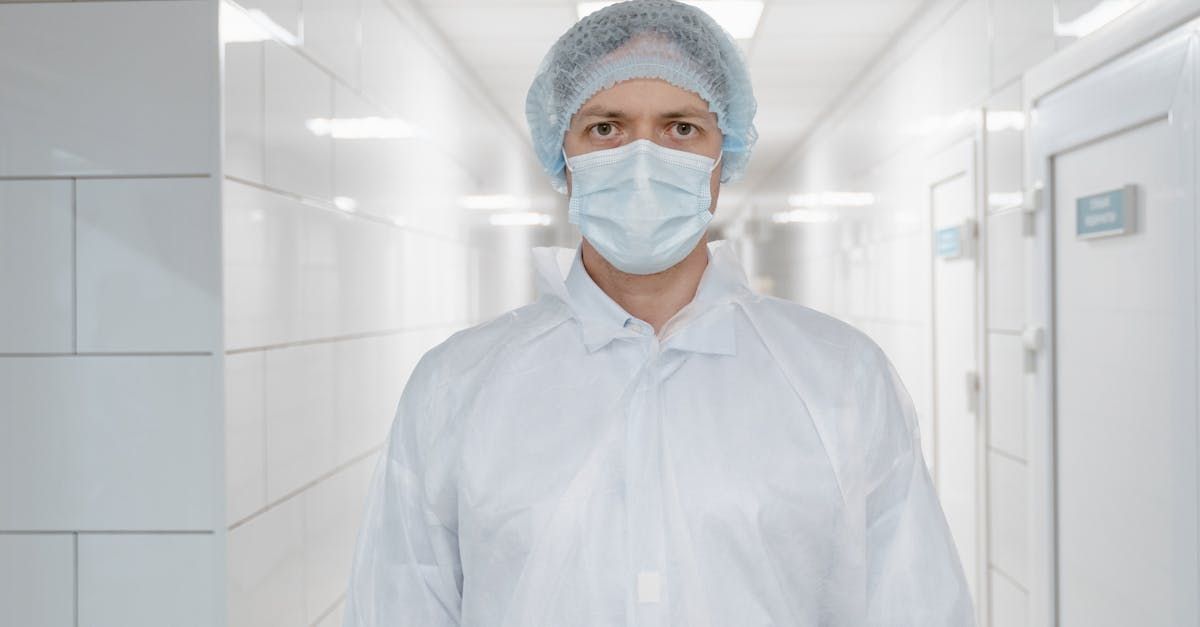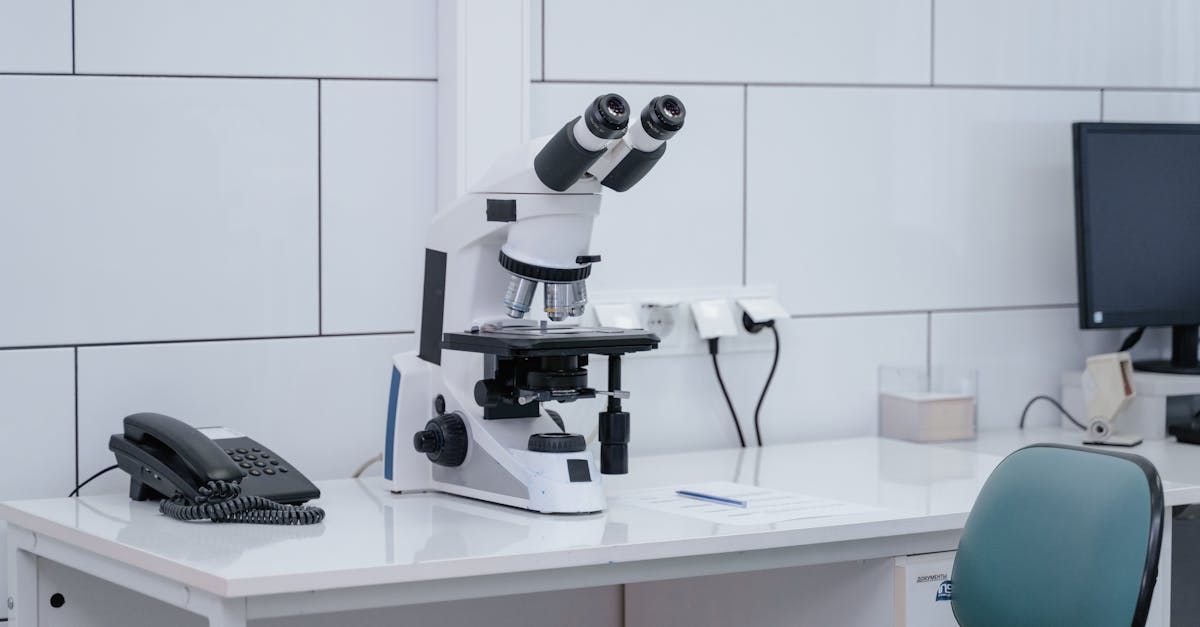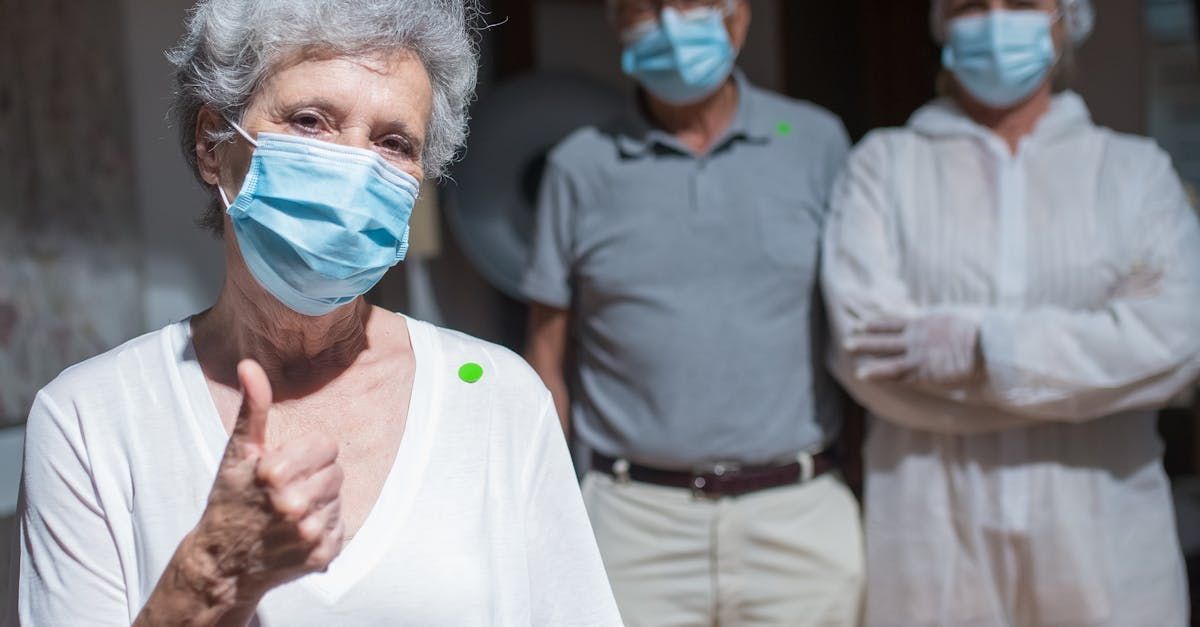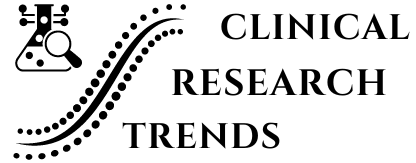Bridging the Gap Between Clinical Trials and Real-Life
In the ever-evolving landscape of drug development and healthcare, the importance of real-world evidence (RWE) has gained significant traction. RWE represents a paradigm shift in how we approach clinical research, bridging the gap between the controlled settings of clinical trials and the complexities of real-world clinical practice. By leveraging data from diverse sources, RWE offers invaluable insights into the effectiveness, safety, and utilization of medical products in real-world settings, ultimately informing clinical decision-making and driving patient-centric healthcare solutions.
Defining Real-World Evidence
Real-world evidence (RWE) refers to the clinical evidence derived from various sources outside the traditional randomized controlled trials (RCTs). This evidence is generated from real-world data (RWD), which encompasses a wide range of sources, including electronic health records (EHRs), patient registries, claims databases, and patient-reported outcomes (PROs). RWE provides a comprehensive view of how medical products perform in real-world settings, capturing the diverse patient populations, treatment patterns, and clinical outcomes that may not be fully represented in the controlled environment of clinical trials.
The significance of RWE lies in its ability to complement and enhance the findings from traditional clinical trials, offering a more holistic understanding of the real-world effectiveness, safety, and value of medical interventions. By leveraging RWE, stakeholders in the healthcare ecosystem can make more informed decisions, optimize treatment strategies, and ultimately improve patient outcomes. RWE has the potential to revolutionize the way we approach drug development, regulatory processes, and healthcare delivery, enabling a more patient-centric and evidence-based approach to medical decision-making.
Sources of Real-World Evidence
Real-world evidence is derived from a variety of data sources, each offering unique insights and perspectives:
Electronic Health Records (EHRs)
EHRs provide a comprehensive longitudinal record of a patient's medical history, including diagnoses, treatments, laboratory results, and clinical notes. These data sources offer valuable insights into treatment patterns, patient outcomes, and potential adverse events in real-world clinical practice. By analyzing EHR data, researchers can gain a deeper understanding of how medical interventions perform in diverse patient populations, accounting for comorbidities, concomitant medications, and other real-world factors that may influence treatment outcomes.
Patient Registries
Disease-specific patient registries collect standardized data on patient characteristics, treatments, and outcomes. These registries can provide valuable information on rare diseases, long-term treatment effects, and patient-reported outcomes, which may be challenging to capture in traditional clinical trials. Patient registries offer a unique opportunity to study specific patient populations over extended periods, enabling the evaluation of long-term safety and effectiveness profiles of medical interventions.
Claims Databases
Claims data from healthcare payers and insurance providers offer insights into treatment utilization, costs, and healthcare resource utilization. These data sources can be leveraged to assess the real-world economic impact of medical interventions and inform value-based healthcare decisions. By analyzing claims data, stakeholders can gain insights into treatment patterns, adherence rates, and the overall burden of disease on healthcare systems, informing resource allocation and reimbursement strategies.
Patient-Reported Outcomes (PROs)
PROs capture patients' perspectives on their health status, quality of life, and treatment experiences. These data sources are particularly valuable in understanding the real-world impact of medical interventions on patient-centered outcomes, which may not be fully captured in traditional clinical trial endpoints. PROs provide a direct window into the lived experiences of patients, enabling a more holistic evaluation of treatment benefits and potential side effects.
Digital Health Technologies:
The proliferation of wearable devices, mobile applications, and remote monitoring technologies has opened up new avenues for collecting real-world data. These digital health tools can provide continuous, objective data on patient adherence, disease progression, and treatment responses in real-world settings. By leveraging these technologies, researchers can gain insights into patient behaviors, symptom patterns, and treatment adherence, which can inform the development of more effective and personalized interventions.
By integrating data from these diverse sources, RWE offers a comprehensive and holistic view of how medical products perform in real-world clinical practice, accounting for the heterogeneity of patient populations, treatment patterns, and healthcare delivery systems. This multifaceted perspective enables a more accurate and nuanced understanding of the real-world effectiveness, safety, and value of medical interventions, ultimately driving better-informed decision-making across the healthcare continuum.
Regulatory Acceptance and Frameworks for Real-World Evidence
As the importance of RWE has grown, regulatory agencies have recognized its potential to inform drug development, approval processes, and post-marketing surveillance. Both the U.S. Food and Drug Administration (FDA) and the European Medicines Agency (EMA) have established frameworks and guidance documents to facilitate the use of RWE in regulatory decision-making.
The FDA's "Real-World Evidence Program" aims to evaluate the potential use of RWE to support the approval of new indications for approved medical products or to satisfy post-approval study requirements. The agency has also issued guidance on the use of electronic health records and medical claims data in regulatory decision-making, providing a structured approach for incorporating these data sources into the regulatory process. Similarly, the EMA has established the "Patient Registries Initiative" to facilitate the use of patient registries in regulatory processes, including post-authorization safety and efficacy monitoring.
The agency has also published guidance on the use of RWE in the context of benefit-risk assessments for medicinal products, recognizing the value of real-world data in informing regulatory decisions. These regulatory frameworks and guidance documents provide a structured approach for incorporating RWE into drug development and regulatory decision-making processes, ensuring that the data meets appropriate standards for quality, reliability, and relevance. By establishing clear guidelines and best practices, regulatory agencies are facilitating the adoption of RWE while maintaining the highest levels of scientific integrity, patient safety, and data quality.
The involvement of regulatory agencies in providing guidance and oversight for RWE is crucial for ensuring the validity and acceptance of the data generated through these innovative approaches. As RWE continues to evolve and become more widespread, ongoing collaboration between regulators, sponsors, and other stakeholders will be essential to address emerging challenges, refine best practices, and maintain a robust regulatory framework that supports the responsible and ethical conduct of real-world research. Moreover, the acceptance of RWE by regulatory agencies has the potential to streamline and accelerate the drug development process.
By leveraging real-world data, pharmaceutical companies can gain valuable insights into disease epidemiology, patient characteristics, and treatment landscapes, enabling more efficient and targeted drug development strategies. Additionally, RWE can support regulatory submissions, label expansions, and post-marketing surveillance activities, ultimately facilitating faster access to innovative therapies for patients in need.
Applications of Real-World Evidence
The applications of RWE span various stages of the drug development and healthcare delivery continuum, offering valuable insights and informing decision-making processes:
Post-Marketing Surveillance
RWE plays a crucial role in post-marketing surveillance, enabling the continuous monitoring of a medical product's safety and effectiveness in real-world settings. By leveraging data from EHRs, patient registries, and claims databases, regulatory agencies and pharmaceutical companies can identify potential safety signals, evaluate long-term outcomes, and implement risk mitigation strategies. This ongoing monitoring is essential for ensuring the safe and effective use of medical products, as real-world populations may differ from those included in clinical trials, and long-term effects may not be fully captured during the initial approval process.
Comparative Effectiveness Research
RWE is invaluable in comparative effectiveness research, which aims to evaluate the relative benefits and risks of different medical interventions in real-world populations. By analyzing data from diverse sources, researchers can compare the effectiveness of treatments across different patient subgroups, treatment patterns, and healthcare settings, informing clinical decision-making and optimizing treatment strategies. This research can guide healthcare providers in selecting the most appropriate and effective interventions for their patients, taking into account individual characteristics, comorbidities, and real-world treatment contexts.
Label Expansions and New Indications
RWE can support the expansion of approved indications or the development of new indications for existing medical products. By analyzing real-world data on treatment patterns, patient outcomes, and potential off-label use, pharmaceutical companies can identify opportunities for label expansions or new indications, ultimately expanding access to effective treatments for patients. This application of RWE can accelerate the availability of therapies for underserved patient populations and facilitate the repurposing of existing drugs for new therapeutic areas.
Precision Medicine and Personalized Treatment:
RWE plays a pivotal role in the advancement of precision medicine by providing insights into the heterogeneity of patient populations, treatment responses, and potential biomarkers. By integrating genomic data, clinical data, and patient-reported outcomes, researchers can identify subgroups of patients who may benefit from targeted therapies or personalized treatment strategies. This approach enables the development of more tailored and effective interventions, optimizing treatment outcomes and minimizing potential adverse effects.
Value-Based Healthcare and Reimbursement Decisions:
RWE offers valuable insights into the real-world economic impact of medical interventions, including healthcare resource utilization, costs, and patient-reported outcomes. This data can inform value-based healthcare decisions, support reimbursement negotiations, and facilitate the development of innovative payment models that align with patient outcomes and value. By providing a comprehensive understanding of the real-world costs and benefits of medical interventions, RWE can guide resource allocation and reimbursement strategies, ensuring that healthcare resources are directed towards interventions that deliver the greatest value to patients and healthcare systems.
Patient-Centered Care and Shared Decision-Making
By incorporating patient-reported outcomes and real-world experiences, RWE empowers patients and healthcare providers to engage in shared decision-making processes. Patients can better understand the potential benefits, risks, and real-world implications of different treatment options, enabling them to make informed choices aligned with their preferences and values. This patient-centric approach fosters a collaborative relationship between patients and healthcare providers, promoting open communication, trust, and shared responsibility in treatment decisions.
Optimizing Clinical Trial Design
RWE can inform the design and conduct of clinical trials by providing insights into patient populations, treatment patterns, and real-world outcomes. This information can help researchers develop more pragmatic and patient-centric trial designs, improve patient recruitment and retention strategies, and ensure that study endpoints are clinically meaningful and relevant to real-world practice. By leveraging RWE, clinical trials can better reflect the diversity and complexity of real-world patient populations, enhancing the generalizability and applicability of trial findings.
Accelerating Drug Development:
By leveraging RWE, pharmaceutical companies can potentially accelerate the drug development process by identifying promising therapeutic candidates, optimizing clinical trial designs, and supporting regulatory submissions. RWE can provide valuable insights into disease epidemiology, patient characteristics, and treatment landscapes, enabling more efficient and targeted drug development strategies. Additionally, the integration of RWE into regulatory processes can facilitate faster approval and access to innovative therapies, ultimately benefiting patients in need.
Informing Healthcare Policy and Resource Allocation
RWE can play a crucial role in informing healthcare policy decisions and resource allocation strategies. By analyzing real-world data on disease burden, treatment patterns, and healthcare utilization, policymakers and healthcare administrators can make evidence-based decisions regarding resource allocation, reimbursement policies, and healthcare delivery models. This data-driven approach can help optimize the allocation of limited resources, ensuring that healthcare systems are equipped to address the most pressing needs of their populations effectively and efficiently.
Advancing Medical Research and Knowledge Generation:
RWE contributes to the advancement of medical research and knowledge generation by providing a rich source of data for scientific inquiry. Researchers can leverage real-world data to explore new hypotheses, identify potential areas for further investigation, and generate novel insights into disease mechanisms, treatment responses, and patient outcomes. This continuous cycle of knowledge generation and application can drive innovation in healthcare, leading to improved understanding of diseases, development of more effective interventions, and ultimately, better patient outcomes.
Challenges and Considerations in Leveraging Real-World Evidence
While the potential of RWE is significant, its effective utilization requires addressing several challenges and considerations:
Data Quality and Standardization:
Ensuring the quality, completeness, and standardization of real-world data is crucial for generating reliable and actionable RWE. Inconsistencies in data collection, coding practices, and data formats can introduce biases and limit the generalizability of findings. Establishing robust data quality assurance processes, standardized data collection protocols, and interoperable data systems is essential to maximize the value and reliability of RWE.
Data Integration and Interoperability:
Integrating data from diverse sources, such as EHRs, registries, and claims databases, can be challenging due to differences in data structures, terminologies, and interoperability standards. Robust data integration strategies and harmonization efforts are necessary to maximize the value of RWE. This may involve the development of common data models, standardized vocabularies, and advanced data linkage techniques to enable seamless integration and analysis of data from multiple sources.
Privacy and Data Protection:
Handling real-world data, particularly patient-level data, raises concerns about privacy and data protection. Strict adherence to data protection regulations, such as the General Data Protection Regulation (GDPR) and the Health Insurance Portability and Accountability Act (HIPAA), is essential to safeguard patient privacy and maintain public trust. Robust data governance frameworks, de-identification techniques, and secure data management practices must be implemented to ensure the responsible and ethical use of real-world data.
Bias and Confounding Factors
Real-world data can be subject to various biases and confounding factors, such as selection bias, missing data, and unmeasured confounders. Robust statistical methods and analytical techniques are required to account for these potential biases and ensure the validity of RWE-based findings. Advanced analytical approaches, such as propensity score matching, instrumental variable analysis, and causal inference methods, can help mitigate the impact of confounding factors and strengthen the reliability of RWE-based conclusions.
Regulatory Acceptance and Harmonization:
While regulatory agencies have established frameworks for the use of RWE, there is a need for continued harmonization and alignment of guidelines across different regions and jurisdictions. Consistent regulatory acceptance and guidance can facilitate the broader adoption and utilization of RWE in drug development and healthcare decision-making processes. Ongoing collaboration and dialogue between regulatory bodies, industry stakeholders, and research organizations are essential to achieve harmonized standards and best practices for RWE generation and application.
Stakeholder Collaboration and Data Sharing:
Leveraging the full potential of RWE requires collaboration and data sharing among various stakeholders, including healthcare providers, payers, pharmaceutical companies, and patient advocacy groups. Establishing trusted data-sharing frameworks, incentives, and governance models is crucial for fostering a collaborative ecosystem. This may involve the development of data-sharing agreements, secure data platforms, and incentive structures that encourage stakeholders to contribute and access real-world data for research and decision-making purposes.
Methodological Rigor and Transparency:
To ensure the credibility and acceptance of RWE, it is essential to maintain methodological rigor and transparency throughout the research process. Clear documentation of data sources, analytical methods, and study limitations is crucial for enabling critical evaluation and replication of findings. Adherence to established research guidelines, peer review processes, and open science practices can enhance the transparency and reproducibility of RWE-based research.
Workforce Development and Expertise
Effectively leveraging RWE requires a multidisciplinary workforce with expertise in areas such as epidemiology, biostatistics, health informatics, and data science. Investing in workforce development and training programs is necessary to build the required skill sets and foster collaboration among diverse stakeholders. This may involve the development of specialized academic programs, industry-academia partnerships, and continuous professional development opportunities to cultivate the necessary expertise in RWE generation and analysis.
Ethical Considerations
The use of RWE raises ethical considerations related to patient privacy, informed consent, and the potential for unintended consequences or misuse of data. Establishing robust ethical frameworks and governance mechanisms is crucial to ensure the responsible and ethical use of RWE while protecting patient rights and interests. This may involve the engagement of ethics committees, patient advocacy groups, and community stakeholders to develop guidelines and oversight mechanisms that align with ethical principles and societal values.
Sustainability and Continuous Improvement:
Leveraging RWE is an ongoing process that requires sustained investment, continuous improvement, and adaptation to emerging technologies and methodologies. Ensuring the long-term sustainability of RWE initiatives involves securing dedicated funding streams, fostering public-private partnerships, and promoting a culture of continuous learning and innovation. Regular evaluation and refinement of RWE practices, based on evolving best practices and stakeholder feedback, are essential to maintain the relevance and impact of RWE in healthcare decision-making.
Despite these challenges, the value proposition of RWE is undeniable. By addressing these considerations and continuously refining methodologies and best practices, the healthcare ecosystem can unlock the full potential of RWE, driving patient-centric care, informing evidence-based decision-making, and ultimately improving patient outcomes.
Notable Labs: Harnessing Real-World Evidence for Precision Medicine
Notable Labs is at the forefront of utilizing real-world evidence (RWE) to enhance their clinical research and drug development processes. By integrating data from electronic health records (EHRs), patient registries, and other real-world sources, Notable Labs can gain comprehensive insights into the effectiveness, safety, and utilization of medical products in everyday clinical practice. This approach bridges the gap between the controlled environments of traditional clinical trials and the diverse, real-life settings in which patients receive care.
The implementation of RWE at Notable Labs allows for a more accurate and nuanced understanding of patient outcomes, treatment patterns, and potential adverse events. By analyzing data from diverse patient populations, Notable Labs can identify trends and correlations that might not be evident in randomized controlled trials. This holistic perspective supports more informed clinical decision-making and the development of personalized treatment strategies, ultimately driving better patient outcomes and advancing the field of precision medicine. Through their commitment to leveraging RWE, Notable Labs is setting a new standard in patient-centric research and healthcare innovation.
Future Directions and Emerging Trends
The field of RWE is rapidly evolving, with emerging trends and innovations shaping its future trajectory:
Artificial Intelligence and Machine Learning:
The integration of artificial intelligence (AI) and machine learning techniques holds immense potential for extracting valuable insights from complex real-world data. These advanced analytical methods can identify patterns, uncover hidden relationships, and generate predictive models, enhancing the value and applicability of RWE. AI and machine learning algorithms can be applied to real-world data to develop predictive models for disease progression, treatment response, and patient outcomes, enabling more personalized and precise healthcare interventions.
Digital Health Technologies and Wearables:
The proliferation of digital health technologies, such as wearable devices, mobile apps, and remote monitoring systems, is generating a wealth of real-world data on patient behaviors, adherence, and treatment responses. Leveraging these data sources can provide a more comprehensive understanding of patient experiences and outcomes in real-world settings. The integration of digital health data with traditional healthcare data sources can enable a holistic view of patient journeys, informing treatment decisions, and facilitating the development of personalized care plans.
Blockchain and Distributed Ledger Technologies:
The application of blockchain and distributed ledger technologies in healthcare can facilitate secure and transparent data sharing, enabling the integration of real-world data from multiple sources while maintaining data integrity and patient privacy. Blockchain-based platforms can provide a decentralized and immutable record of real-world data, ensuring data provenance and enabling secure data exchange among stakeholders, while preserving patient privacy and data ownership.
Patient Engagement and Citizen Science
Engaging patients and leveraging citizen science initiatives can contribute to the generation of high-quality, patient-reported real-world data. By empowering patients to actively participate in data collection and research, RWE can better capture the lived experiences and perspectives of diverse patient populations. Patient-reported outcomes and experiences can be integrated with clinical data to provide a more comprehensive understanding of treatment effectiveness, side effects, and quality of life implications.
Public-Private Partnerships and Data Collaboratives
Fostering public-private partnerships and data collaboratives among stakeholders, including healthcare providers, payers, pharmaceutical companies, and patient advocacy groups, can facilitate the sharing and integration of real-world data, driving innovation and accelerating the generation of RWE. These collaborative models can leverage the collective expertise and resources of diverse stakeholders, enabling more comprehensive and representative real-world data collection and analysis.
Regulatory Harmonization and Global Collaboration:
Continued efforts towards regulatory harmonization and global collaboration are essential to establish consistent standards, guidelines, and best practices for the generation and utilization of RWE across different regions and jurisdictions. Harmonized regulatory frameworks can facilitate the conduct of multi-national and global RWE studies, enabling the sharing of data and insights across borders, and promoting the development of innovative and effective medical interventions on a global scale.
Integration with Clinical Trial Platforms
Incorporating RWE into clinical trial platforms can enable more efficient and patient-centric trial designs, improve patient recruitment and retention strategies, and ensure that study endpoints are clinically meaningful and relevant to real-world practice. By leveraging real-world data, clinical trials can better reflect the diversity and complexity of patient populations, enhancing the generalizability and applicability of trial findings.
Precision Medicine and Biomarker Discovery:
The integration of RWE with genomic and molecular data can drive the development of precision medicine approaches, enabling the identification of biomarkers and the stratification of patient populations for targeted therapies. By combining real-world clinical data with genomic and molecular profiling, researchers can uncover novel biomarkers and develop personalized treatment strategies tailored to individual patient characteristics and disease subtypes.
Value-Based Care and Reimbursement Models:
RWE can play a pivotal role in the transition towards value-based care models by providing insights into the real-world effectiveness, safety, and economic impact of medical interventions, informing reimbursement decisions and facilitating the development of innovative payment models aligned with patient outcomes and value. By demonstrating the real-world value of medical interventions, RWE can support the adoption of value-based reimbursement models that incentivize high-quality, cost-effective care.
Continuous Learning and Feedback Loops
The integration of RWE into healthcare delivery systems can enable continuous learning and feedback loops, where real-world data is continuously collected, analyzed, and used to refine and optimize treatment strategies. This iterative process can drive rapid improvements in clinical practice, enabling healthcare providers to adapt and tailor interventions based on the latest real-world evidence, ultimately leading to better patient outcomes and more efficient healthcare delivery.
As the healthcare ecosystem continues to evolve, the role of RWE will become increasingly pivotal in driving patient-centric care, informing evidence-based decision-making, and accelerating the development of innovative and effective medical interventions. By embracing the power of real-world data and leveraging emerging technologies and collaborative approaches, stakeholders can unlock the full potential of RWE, ultimately improving patient outcomes and advancing the frontiers of healthcare.
Conclusion
The rise of real-world evidence (RWE) marks a significant evolution in the landscape of drug development and healthcare. By bridging the gap between controlled clinical trials and the complexities of real-life clinical practice, RWE offers a more comprehensive and nuanced understanding of the effectiveness, safety, and value of medical interventions. The integration of diverse data sources, such as electronic health records, patient registries, claims databases, and patient-reported outcomes, provides invaluable insights that enhance clinical decision-making and drive patient-centric healthcare solutions.
As regulatory agencies continue to recognize and facilitate the use of RWE, its potential to accelerate drug development, support regulatory submissions, and inform post-marketing surveillance becomes increasingly evident. The adoption of RWE allows stakeholders to make more informed decisions, optimize treatment strategies, and ultimately improve patient outcomes. By embracing this paradigm shift and leveraging the power of real-world data, the healthcare ecosystem can advance towards a more evidence-based, patient-centric, and efficient approach to medical innovation, ultimately benefiting patients worldwide.










